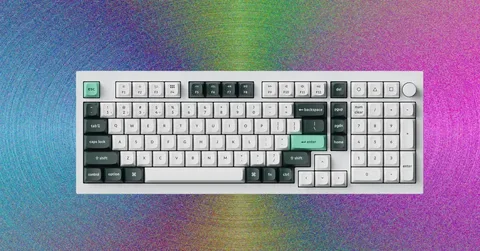When it comes to choosing the right keyboard for programming, many developers opt for the 87-key keyboard, also known as a Tenkeyless (TKL) keyboard. It’s a popular choice among coders who want a compact design without sacrificing essential keys. In this article, we’ll explore the pros and cons of using an 87 keyboard for programming and coding to help you decide if it’s the right tool for your workflow.
What Is an 87 Keyboard?
An 87 keyboard is essentially a standard keyboard without the numeric keypad. It retains all the keys necessary for typing, coding, and shortcut use—including the function row, arrow keys, and navigation cluster—but trims down the overall size by removing the number pad on the right.
Pros of Using an 87 Keyboard for Programming and Coding
1. More Desk Space
One of the biggest advantages is the extra desk space. Without the number pad, the 87-key layout takes up less room, making it ideal for smaller workspaces or minimalist setups.
2. Improved Ergonomics
With a more compact form, your mouse can sit closer to the keyboard. This reduces the strain on your shoulder and wrist caused by extended outward movement, which is especially beneficial during long programming sessions.
3. Portability
The smaller size also makes an 87 keyboard easier to carry around. If you work remotely or switch workstations often, this keyboard is a convenient option.
4. Focused Layout
By removing the numpad, the 87 layout helps many programmers stay focused. It includes all the keys you need for coding without distractions, making it ideal for software developers, sysadmins, and even writers.
Cons of Using an 87 Keyboard for Programming and Coding
1. No Numpad
The most obvious downside is the lack of a numeric keypad. If your coding tasks involve a lot of data entry, mathematical functions, or spreadsheet work, this can be inconvenient.
2. Not Ideal for All Professions
While developers may find it sufficient, data analysts or engineers who rely heavily on numeric input may miss the numpad.
3. Limited Custom Key Options
Some users who customize their keybinds or macros might find the reduced key count restrictive, depending on their needs.
Should You Choose an 87 Keyboard for Programming?
The pros and cons of using an 87 keyboard for programming and coding largely depend on your personal preferences and work requirements. If you value desk space, portability, and a streamlined layout, the 87-keyboard is an excellent choice. However, if you frequently use the numeric keypad, you might want to consider a full-sized keyboard or use an external numpad.
Conclusion
Understanding the pros and cons of using an 87 keyboard for programming and coding is key to optimizing your setup. For many coders, it strikes a perfect balance between functionality and compact design. But like any tool, it’s essential to choose what best fits your specific workflow and comfort.


